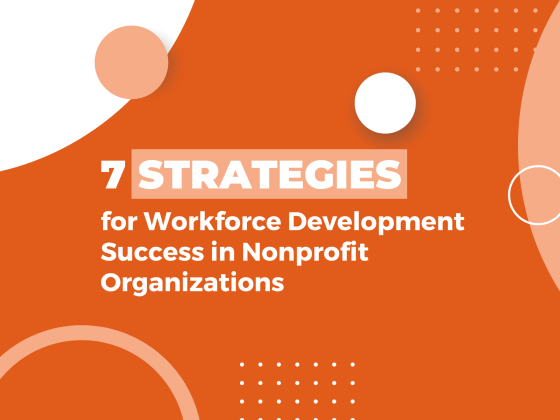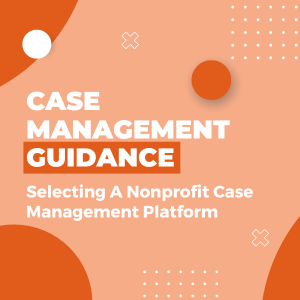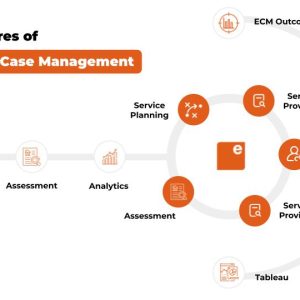7 Strategies for Workforce Development Success in Nonprofit Organizations
Nonprofit organizations often aim to help marginalized individuals find meaningful employment and develop their skills through workforce development programs. However, creating and executing a successful workforce development program can be challenging, as it involves coordinating with multiple stakeholders and overcoming various barriers.
In this article, we will explore seven strategies to ensure the success of your workforce development ideas.
What Is A Workforce Development Program Offered By Nonprofits?
A workforce development program offered by nonprofits is a program that aims to help individuals improve their employment prospects and develop the skills necessary to secure and maintain a job. These programs are geared towards individuals who face barriers to employment, such as low-income individuals, individuals with disabilities, veterans, and ex-offenders.
Nonprofit workforce development programs can offer a range of services, including:
- job training
- career counseling
- job placement assistance
- support services such as transportation and child care.
Some programs may focus on specific industries or job sectors, such as healthcare or technology, while others may offer more general job skills training.
Overall, the goal of these programs is to provide individuals with the tools and resources they need to succeed in the workforce and to help them achieve economic self-sufficiency.
How To Develop A Workforce Development Program
Developing a workforce development program at a nonprofit organization can be a challenging but rewarding task for case managers and program directors. Here are some steps to guide you through the process:
1. Identify The Target Population
Determine the group of individuals who will benefit from the program. This can include the unemployed, underemployed, individuals with disabilities, or those who have been involved with the justice system.
2. Conduct A Needs Assessment
Conduct a needs assessment to understand the specific needs, challenges, and workforce development goals of your clients. This can include surveys, focus groups, or one-on-one interviews with the target population and community stakeholders.
3. Design The Program
Develop a program that includes support services tailored to the needs and goals of the target population.
- training materials
- relevant certifications
- mentorship and coaching
- career counseling
- job placement services
- evaluation tools
4. Develop A Budget
Determine the resources needed to implement the program, including staff, materials, and training costs. Consider potential funding sources, such as grants or corporate partnerships.
5. Recruit And Train Qualified Staff
Hire qualified staff who have experience in workforce development and training. Provide them with additional training to deliver the program effectively. They should be culturally sensitive and committed to serving the target population.
6. Implement The Program
Begin offering the program, and promote it to the target population and other stakeholders. Collect data on program outcomes and evaluate their effectiveness regularly. You can also gather feedback from program participants, staff, and partners.
7 Strategies To Ensure Your Workforce Development Program’s Success
There are several workforce development techniques that nonprofit organizations can adopt to ensure the success of their workforce development program. Here are some of them:
1. Develop A Clear Theory Of Change
Before embarking on any workforce development program, your nonprofit should develop a clear theory of change. A theory of change provides a framework for understanding the steps needed to achieve a desired outcome. It also helps articulate its mission, goals, and intended impact. This will help to ensure that your efforts are effectively and efficiently directed toward achieving that impact.
Once you have a defined theory of change, you can develop clear program goals and outcomes that align with the organization’s mission and the needs of the target population. These goals should be specific, measurable, achievable, relevant, and time-bound (SMART).
2. Partner with Employers and Industry Experts
Your workforce development activities should include partnering with industry experts and employers. This will help you develop a workforce development program that meets the needs of both job seekers and employers.
These partnerships can help organizations gain insight into the job market and industry trends and develop training programs that are relevant and effective. Additionally, partnerships with employers can provide job seekers with job placement opportunities and increase the likelihood of success for the program.
Other good partnerships include local businesses, industry associations, educational institutions, and other community-based organizations. These organizations can provide program participants with access to resources and opportunities.
3. Leverage Technology
Technology can be a powerful tool for workforce development success in nonprofit organizations. Online learning platforms, virtual job fairs, and social media can be used to connect job seekers with employers and provide training and resources. Additionally, data analytics can be used to track program outcomes and identify areas for improvement.
4. Provide Wraparound Services
Workforce development programs are not just about job training; they also involve providing wraparound services to help individuals overcome barriers to employment. Nonprofit organizations can provide services such as transportation assistance, childcare, and financial counseling to support job seekers as they navigate the job market.
5. Offer Soft Skills Training
In addition to technical training, nonprofit organizations should offer soft skills training to job seekers. Soft skills such as communication, teamwork, and problem-solving are critical for success in any job, and nonprofit organizations can help job seekers develop these skills through workshops and coaching.
6. Engage the Community
Engaging the community is an essential strategy for workforce development success in nonprofit organizations. By partnering with community organizations, nonprofit organizations can connect with job seekers who may not be aware of their services. Additionally, community partnerships can provide nonprofit organizations with resources and support to ensure the success of their workforce development program.
7. Measure Success and Improve
Finally, nonprofit organizations must regularly measure program outcomes to determine the impact of the program on participants and the community. This can include earnings and other success metrics.
This step involves collecting data on program outcomes, assessing the effectiveness of training and services, and making changes to improve the program’s impact. By continuously measuring and iterating, nonprofit organizations can ensure that their workforce development program remains relevant and effective.
How Can Exponent Case Management Help?
Nonprofit workforce development programs can be a valuable resource for individuals who are struggling to find employment or who are looking to advance their careers. But creating and executing your workforce development ideas requires careful planning, collaboration, and perseverance.
With the help of Exponent Case Management’s workforce development solution, workforce development organizations can achieve radically better outcomes for participants, while optimizing performance and managing programs with ease. Our software is designed to help organizations meet complex funder requirements like WIOA and Vocational Rehabilitation, ensuring compliance and maximizing funding opportunities.
The Workforce Development module is a starting point for organizations to use right out of the box or tailor it to their specific operational needs. This module supports your team at every stage of implementing your program, from intake and skills assessment to tracking each participant’s progress from job coaching to placement and retention.
If you’re ready to learn more, watch our full webinar video with insights and best practices for workforce development. Sign up to gain access to the webinar and discover how Exponent Case Management’s features and capabilities can empower your organization.




